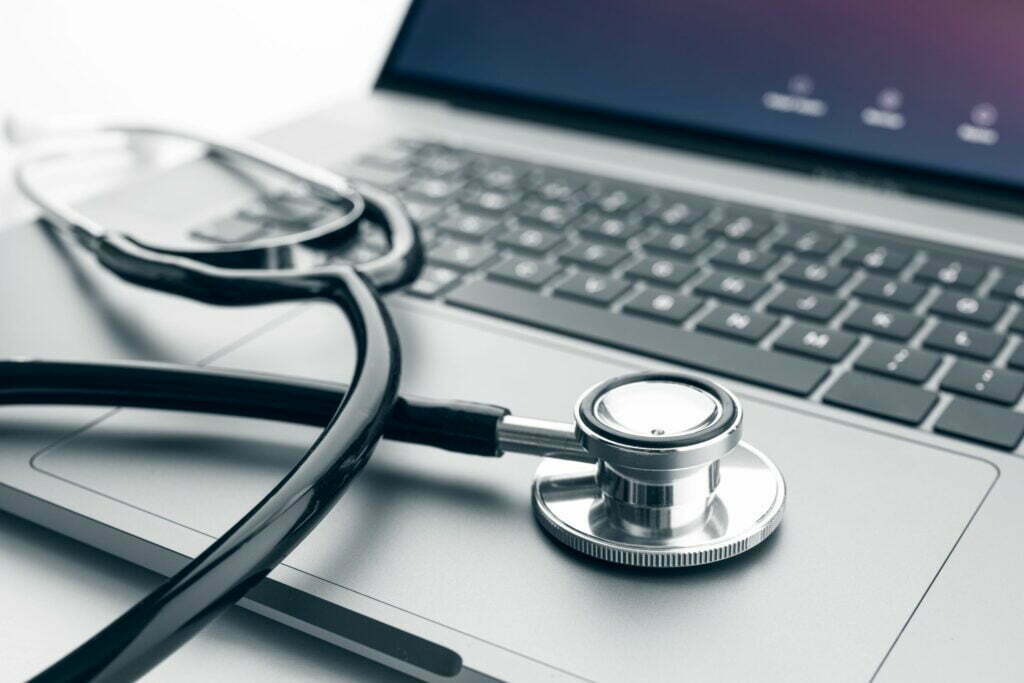The potential of Remote Patient Monitoring and Artificial Intelligence goes well beyond simply supplying raw patient health data into physician-facing reports and interfaces, it provides the opportunity for proactive care and the ability to predict adverse outcomes without the need for regular visits. Moreover, AI and RPM help in streamlining clinical workflows, automating processes, and empowering doctors with actionable insights.
1. Streamlining clinical workflows through data analytics
AI-powered patient analytics tackles the monitoring of thousands of patients at once for healthcare practitioners and depends on sophisticated tools to recommend immediate treatment when needed to patients outside of the traditional environment. Early warning systems, whose dependable algorithms are based on large data sets, aid in the early detection of possible deterioration, allowing them to improve patient outcomes. Because AI can examine a wealth of saved data, it is more likely to be regarded as analytics on steroids. The built-in AI features are developed by new patient data input provided via continuous monitoring. The longer the usage time and the more data which gets collected both result in a more dependable and accurate predictions.
Transforming raw data into clear, practical, and actionable insights is the goal of AI analysis. When you use AI-guided systems in your data analysis, you may automatically clean, analyze, explain, and finally display your data. AI-powered software can evaluate data from any source and provide valuable insights. Patient data evaluated using AI may be beneficial in assisting healthcare development, improving team performance, and letting the process know what works and what does not work.
RPM and AI allow for proactive detection and intervention. If the patient’s remote monitoring equipment identifies a risk or problem, and this data source is combined with predictive analytics, the care team may instantly take preventive steps. AI may use this drop, along with current clinical data, to forecast that the patient may need to attend the ER.
2. Increasing the automation of the process
Workflow automation may be utilized in the automation of staff work schedules and on-call rotations in healthcare systems, such as through the usage of RPM. Workflow automation can also help with hospital admission and discharge and transfer patients’ electronic health information automatically.
The next-generation AI-powered RPM has a speedy procedure when implementing any automation, processing approvals, or recognizing hazards in patients’ medical circumstances. Automation can increase staffing flexibility by taking over tedious tasks and allowing staff to focus on the most important tasks. As a result, it enables speedier operations in terms of communication and detection, leading to a rise in the efficiency and accuracy of data or other processes.
Using automation techniques, both patients and physicians may respond more swiftly. The RPM process may help with this by increasing and mapping out workflow visibility, reducing workflow cycles, reducing the requirement for manual product handling, and increasing overall staff and patient happiness. This removes the necessity for possibly tedious, repeated chores. Because each stage in the healthcare process is allocated to a single action. Automation can improve accountability by assisting staff within an organization to meet their goals. Workflow automation is beneficial since it can be updated and added as required for more effective job management with dashboards, calendars, and other tools made available by workflow automation software applications.
3. Empowering healthcare providers with actionable insights
Medical teams still lack patient management insight that allows them to properly triage patients and prioritize care especially in overpopulated COVID-19 wards, especially because a COVID-19 patient’s health status can deteriorate rapidly. This lack of actionable insight inhibits medical staff’s capacity to provide the right care at the right time amid ward overcrowding.
This problem is being solved by incorporating AI-powered data analytics into RPM systems, which stratifies continuous patient data and makes it actionable. Providers may now monitor thousands of patients at once and rely on modern technology to triage and direct patient care to those who need it most, allowing hospitals to maximize their resources. Early warning systems, which use reliable algorithms based on big data sets, assist medical professionals predict probable deterioration quickly, allowing them to take proactive measures to improve patient outcomes.
The data sets are generated by new patient data input provided through continuous monitoring, providing a self-sustaining cycle in which such technologies become more trustworthy and accurate with increased use. As new variants of the virus emerge, this technology could play a critical role in patient care in the future.
Takeaway
As the whole healthcare system battles COVID-19 and adjusts to social distancing norms, it is critical to recognize the impact of medical distancing and the technological breakthroughs that have resulted from it. Thanks to AI-powered remote patient care technologies, medical teams are now better equipped to improve patient outcomes and reduce infection transmission.
Looking ahead, the use of AI-powered remote patient monitoring systems in this current pandemic period will create a use case for healthcare institutions all over the world, paving the way for remote patient care standards and enhancing patient outcomes in the hospital and at home. RPM uses AI to help care teams identify specific, controllable risk factors in raw data and monitor engagement efficacy to improve overall health and other outcomes.









